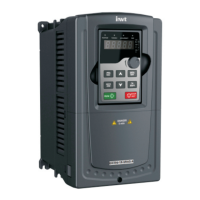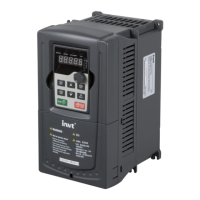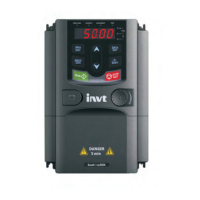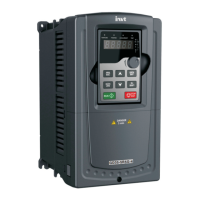Goodrive300-01A-RT series integrated machine Communication protocol
-151-
Some of the operation addresses are invalid or not allowed to access.
Especially the combination of the register and the transmitting bytes are
invalid.
The received data domain contains a value that is not allowed. The value
indicates the error of the remaining structure in the combined request.
Note: It does not mean that the data item submitted for storage in the
register includes a value unexpected by the program.
The parameter setting in parameter writing is invalid. For example, the
function input terminal cannot be set repeatedly.
The password written to the password check address is not same as the
password set by P07.00.
In the frame message sent by the upper computer, the length of the digital
frame is incorrect or the counting of CRC check bit in RTU is different from
the lower computer.
The parameter to be modified in the write operation of the upper computer
is a read-only parameter.
Parameter
cannot be
modified
during
running
The modified parameter in the writing of the upper computer cannot be
modified during running.
When the upper computer is writing or reading and the user password is set
without password unlocking, it will report that the system is locked.
The slave uses function code fields and fault addresses to indicate it is a normal response or some
error occurs (named as objection response). For normal responses, the slave shows corresponding
function codes, digital address or sub-function codes as the response. For objection responses, the
slave returns a code which equals to the normal code, but the first byte is logic 1.
For example: when the master sends a message to the slave, requiring it to read a group of address
data of the VFD function codes, there will be following function codes:
0 0 0 0 0 0 1 1 (Hex 03H)
For normal responses, the slave responds to the same codes, while for objection responses, it will
return:
1 0 0 0 0 0 1 1 (Hex 83H)
Besides the function codes modification for the objection fault, the slave will respond a byte of
abnormal code which defines the error reason. When the master receives the response for the
objection, in a typical processing, it will send the message again or modify the corresponding
command.

